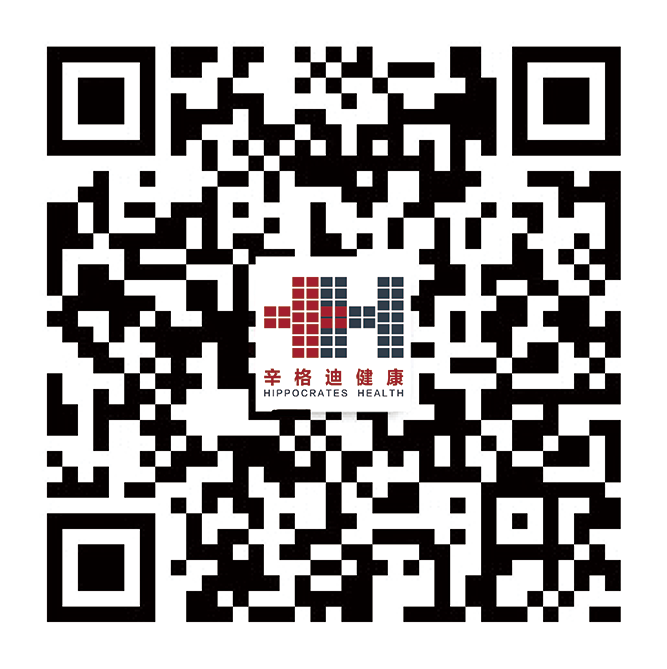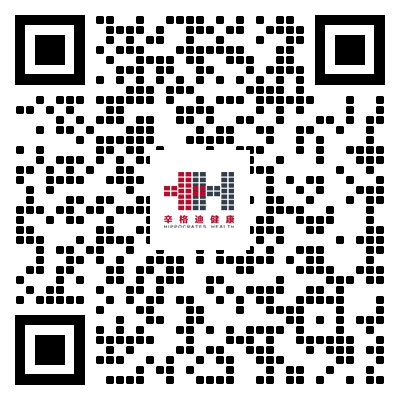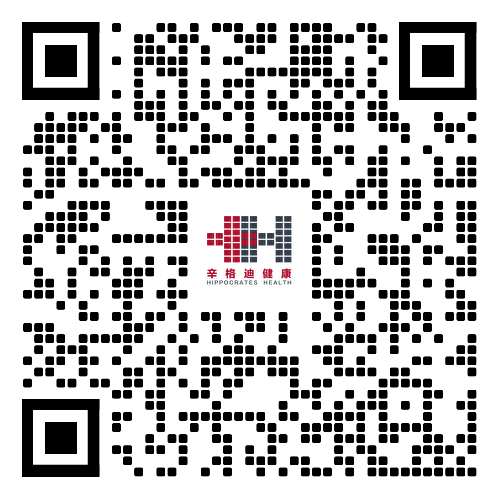Pharmacovigilance Management System (PVS) Project of Xi'an Tianyi Qinkun Pharmaceutical Co., Ltd.
I. Case Overview
Founded in 1994, Xi'an Tianyi Qinkun Pharmaceutical Co., Ltd. (referred to as "Tianyi Qinkun Pharmaceutical") is a modern high-tech enterprise integrating the cultivation, R&D, production and sales of pharmaceuticals and big health products. Located at No. 72 Jinye Road, Xi'an High-tech Development Zone, the company enjoys convenient transportation, a superior geographical location and a pleasant environment. Since its establishment, the company has adhered to the corporate tenet of "Refine Pharmaceuticals with Diligence, Serve the People with Sincerity", focused on product quality, committed to providing the people with safe and satisfactory medicines, and taken the people's health as its responsibility. Tianyi Qinkun Pharmaceutical has a wide range of products in various dosage forms and varieties. The popularity and reputation of these product brands have won the company extensive market recognition.
II. Project Background
With the official implementation of China's newly revised Drug Administration Law in December 2019 and the release of the Announcement on the Good Pharmacovigilance Practice (GVP) (Announcement No. 65 of 2021) on May 7, 2021, China has officially entered the era of pharmacovigilance. All pharmacovigilance activities revolve around two core lines: one is centered on the construction of a pharmacovigilance system, requiring marketing authorization holders (MAHs) to establish, operate and maintain a pharmacovigilance system; the other is centered on drug risk management, requiring MAHs to monitor, identify, evaluate and control risks. Typical defects commonly mentioned in official reports on GVP inspections include:
- Inadequate pharmacovigilance system: Enterprises may fail to establish a sound pharmacovigilance system, including the monitoring, identification, evaluation and control of adverse drug reactions (ADRs) and other harmful reactions related to drug use.
- Insufficient participation of professional management personnel: Enterprises may fail to ensure the full participation of pharmacovigilance management personnel in business activities, leading to incomplete implementation of pharmacovigilance work and insufficient drug safety management.
- Poor quality of pharmacovigilance reports: Enterprises may fail to attach sufficient importance to pharmacovigilance reports, such as individual case reports, Development Safety Update Reports (DSURs) and Periodic Safety Update Reports (PSURs), resulting in incomplete and low-quality reports that fail to meet regulatory requirements.
- Inadequate risk communication: Pharmaceutical enterprises may fail to carry out pharmacovigilance activities in collaboration with medical institutions, pharmaceutical manufacturers and pharmaceutical distributors, leading to insufficient risk communication.
- Inadequate supervision over innovative drugs and improved new drugs: For products such as innovative drugs and improved new drugs, pharmaceutical enterprises may fail to strengthen post-marketing monitoring based on the safety characteristics of the products, and fail to enhance the awareness of medical institutions, pharmaceutical manufacturers, pharmaceutical distributors and patients in reporting suspected ADR information.
- Considering its extensive product line covering multiple therapeutic areas and its strict requirements for product quality and safety, Tianyi Qinkun Pharmaceutical recognizes that establishing a Pharmacovigilance Management System (PVS) is crucial for monitoring drug safety, collecting and analyzing ADR reports, evaluating drug risks and taking necessary risk management measures. Tianyi Qinkun Pharmaceutical has adopted the Singdi Pharmacovigilance Management System (PVS; Jingtai®, VigiTrust®). Independently developed by Singdi, the PVS is designed for marketing authorization holders (MAHs) and professional contract research organizations (CROs), including pharmaceutical enterprises, vaccine enterprises and medical device enterprises. It supports the entire business process of compliant and efficient collection, processing, reporting and analysis, covering the reporting of adverse events and safety management during the clinical trial phase and post-marketing phase of products. It is compatible with the ICH E2B (R3) standard and enables electronic transmission of Individual Case Safety Reports (ICSRs) to various regulatory authorities via Gateway-to-Gateway real-time online submission or E2B (R3) XML file submission through the "Applicant Window".
III. Specific Measures
(I) Overall Planning
Based on the Aotai Platform, Singdi PVS integrates a pharmacovigilance regulatory database, pharmacovigilance system documents, industry-related training courses, quality management systems and processes, electronic signatures, and a Serious Adverse Event (SAE) Assistant. As a comprehensive digital pharmacovigilance solution, it helps enterprises quickly establish a pharmacovigilance business operation system that complies with national regulations and regulatory requirements, and build a comprehensive digital pharmacovigilance management platform.
On the basis of the established Jingtai System, the functions of signal detection, big data analysis and business automation of the Jingtai Platform can be further enhanced, and advanced technologies can be used to continuously empower pharmaceutical enterprises in their pharmacovigilance work.
(II) Business Model
The Singdi Jingtai® System (Pharmacovigilance Management System, PVS; VigiTrust®) includes a variety of functional modules. Enterprises can select different modules and implement them in phases according to the requirements of pharmacovigilance system construction, pre-marketing and post-marketing business activities, and signal detection. As a standardized SaaS product, the Jingtai System has a short implementation cycle (2-4 weeks) and can quickly respond to customers' system construction and GVP business needs. By implementing the Singdi Pharmacovigilance Management Solution (PVS), Tianyi Qinkun Pharmaceutical helps pharmaceutical companies comprehensively improve their pharmacovigilance management capabilities and meet industry compliance requirements in the following aspects, in response to the complex regulatory requirements of the pharmaceutical industry:
- Establish a sound pharmacovigilance system: Pharmaceutical enterprises need to establish and continuously improve a pharmacovigilance system in accordance with the Good Pharmacovigilance Practice (GVP), ensuring that the system covers the monitoring, identification, evaluation and control of ADRs and other harmful reactions related to drug use throughout the entire life cycle of drugs.
- Personnel training and qualification: Pharmaceutical enterprises should be equipped with a sufficient number of full-time personnel with appropriate qualifications, and conduct pharmacovigilance training to ensure that relevant personnel have the necessary knowledge and skills.
- Standardize pharmacovigilance activities: Pharmaceutical enterprises should standardize pharmacovigilance activities, including the monitoring and reporting of ADR information, risk identification and evaluation, and risk control, to meet the requirements of the National Medical Products Administration (NMPA).
- Quality management and internal audit: Pharmaceutical enterprises should establish a quality assurance system, conduct regular internal audits to evaluate the suitability, adequacy and effectiveness of the pharmacovigilance system, and take corrective and preventive measures for identified problems.
- Risk communication: Pharmaceutical enterprises should carry out pharmacovigilance work in collaboration with medical institutions, pharmaceutical manufacturers and pharmaceutical distributors, and conduct effective risk communication when necessary.
- Compliance with international standards: With the internationalization of the pharmaceutical industry, pharmaceutical enterprises also need to comply with international standards, such as the ICH E2B (R3) standard, to ensure the compliance of ICSR submissions.
- The implementation of PVS not only improves the efficiency and quality of pharmacovigilance management, but also helps enterprises establish a sound pharmacovigilance management system, thereby enhancing the safety and compliance capabilities of drugs.
(III) Technical Architecture
Singdi's PVS is one of the core solutions on the Singdi Aotai Digital Platform. The Aotai Platform is a digital platform jointly developed by Singdi's industry experts and IT experts. With "Quality and Compliance Expert" as its management philosophy and market positioning, it helps enterprises improve their quality and compliance levels, meet industry supervision requirements, enhance enterprise management capabilities, and accelerate the launch of more safe, effective and high-quality products.
Applications on the Aotai Platform can be customized to meet the specific needs of enterprises for quality systems. The built-in configuration tools already include multiple quality management functions, eliminating the need for customization or programming to implement certain special processes. After training, personnel can quickly customize forms, decision trees and dashboards to meet specific business needs.
The superior design of the Aotai Platform ensures that users can quickly access large volumes of records and data, thereby improving work efficiency. The "intelligent loading" of forms minimizes loading time; frequently used data is cached to maximize network bandwidth utilization; data is stored in an effective manner; and the distributed architecture is optimized for server expansion. Standard APIs greatly improve system access efficiency, including automatic email notifications, SMS notifications and dashboard alerts integrated into workflows, which significantly reduce the risk of missing tasks or approvals. The background task submission and management mode supports users to perform other tasks simultaneously. A standard intermediate service layer is provided to support integration with any third-party system, facilitating data exchange between the Aotai Platform and other application systems.
IV. Construction Achievements
(I) Enterprise Achievements
Singdi PVS not only helps enterprises quickly establish a pharmacovigilance management system, but also supports pharmaceutical enterprises in carrying out comprehensive pharmacovigilance activities, including: entry of ICSRs into the system; quality control of ICSRs; medical review of ICSRs and drafting of SAE descriptions; drafting of post-marketing key monitoring research protocols; drafting of key monitoring reports; drafting of clinical trial reports; retrieval of adverse events in Chinese and English literature; and formulation of risk control/management strategies. Based on the Aotai Platform, the solution integrates a pharmacovigilance regulatory database, pharmacovigilance system documents, industry-related training courses, quality management systems and processes, electronic signatures, and an SAE Assistant. As a comprehensive digital pharmacovigilance solution, it helps enterprises quickly build a pharmacovigilance business operation system that complies with national regulations and regulatory requirements.
Singdi PVS helps enterprises establish a comprehensive digital management model based on "Jingtai", enabling them to meet the increasingly strict regulatory requirements.
(II) Social Achievements
- Ensuring enterprises meet inspection and industry supervision requirementsIt helps enterprises build a digital management system to meet industry supervision requirements. The PVS system covers the entire process of pharmacovigilance work, is designed in accordance with relevant domestic and international standards, and meets regulatory requirements. It has built-in audit trails and query management functions to meet the inspection and audit requirements of enterprises.
- Intelligent data collection and data analysisIt features convenient and fast collection (supporting both computer and mobile terminals), process-based and guided collection (simple and easy to learn), and permanent data storage. It can generate multi-dimensional reports covering drugs, clinical trials, regions and patients, and conduct comprehensive data analysis on a daily, weekly, monthly or full-cycle basis. It also provides real-time data query and rich graphical report presentation functions. In addition, it can quickly generate PSURs and DSURs with guided operations and automatic report generation, featuring short report cycles and high efficiency.
- Improving drug safety and ensuring the people have access to safe medicinesSingdi PVS enables timely monitoring and identification of ADRs and evaluation of drug safety, thereby reducing the occurrence of ADRs and ensuring public drug use safety. By analyzing ADRs, pharmaceutical enterprises can identify problems in the drug production and use process, further improve drug quality and enhance drug efficacy. The drug safety information provided by the pharmacovigilance system can assist doctors and pharmacists in making more reasonable drug use decisions, improving the safety and effectiveness of clinical drug use. Through the monitoring and analysis of the pharmacovigilance system, drug risks can be identified and controlled in a timely manner, reducing harm to patients caused by ADRs and protecting patients' rights and interests.
- Realizing greater public health valueSingdi PVS can improve the efficiency of collecting and analyzing drug safety information, helping pharmaceutical enterprises and regulatory authorities allocate resources more rationally and improve work efficiency. It can help pharmaceutical enterprises better understand the performance of drugs in actual use, provide feedback for drug R&D and promote pharmaceutical innovation. It is conducive to the timely identification and control of drug safety incidents, reducing the occurrence of public health incidents and improving public health standards. The application of PVS can also help pharmaceutical enterprises comply with international drug regulatory standards and promote international pharmaceutical cooperation; it helps enterprises meet national and international regulatory requirements, ensure drug safety and protect public health.
V. Related Solutions
- Solution 1: Pharmacovigilance Solution (PVS)
- Solution 2: GMP Quality Compliance Digital Solution (QCMS)
VI. Related Cases
- Case 1: Pharmacovigilance Management System (PVS) Project of Beijing Northland Biotechnology Co., Ltd.
- Case 2: Pharmacovigilance (PVS) Project of Sinovac Biopharmaceutical Co., Ltd.
- Case 3: GMP Quality Compliance Digitalization (QCMS) Project of Zhejiang Zhenyuan



